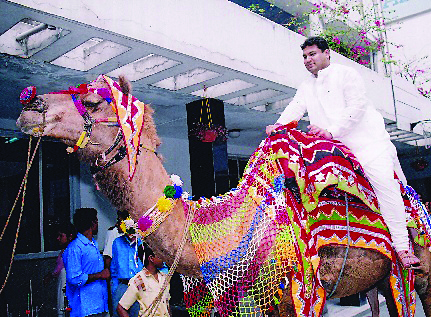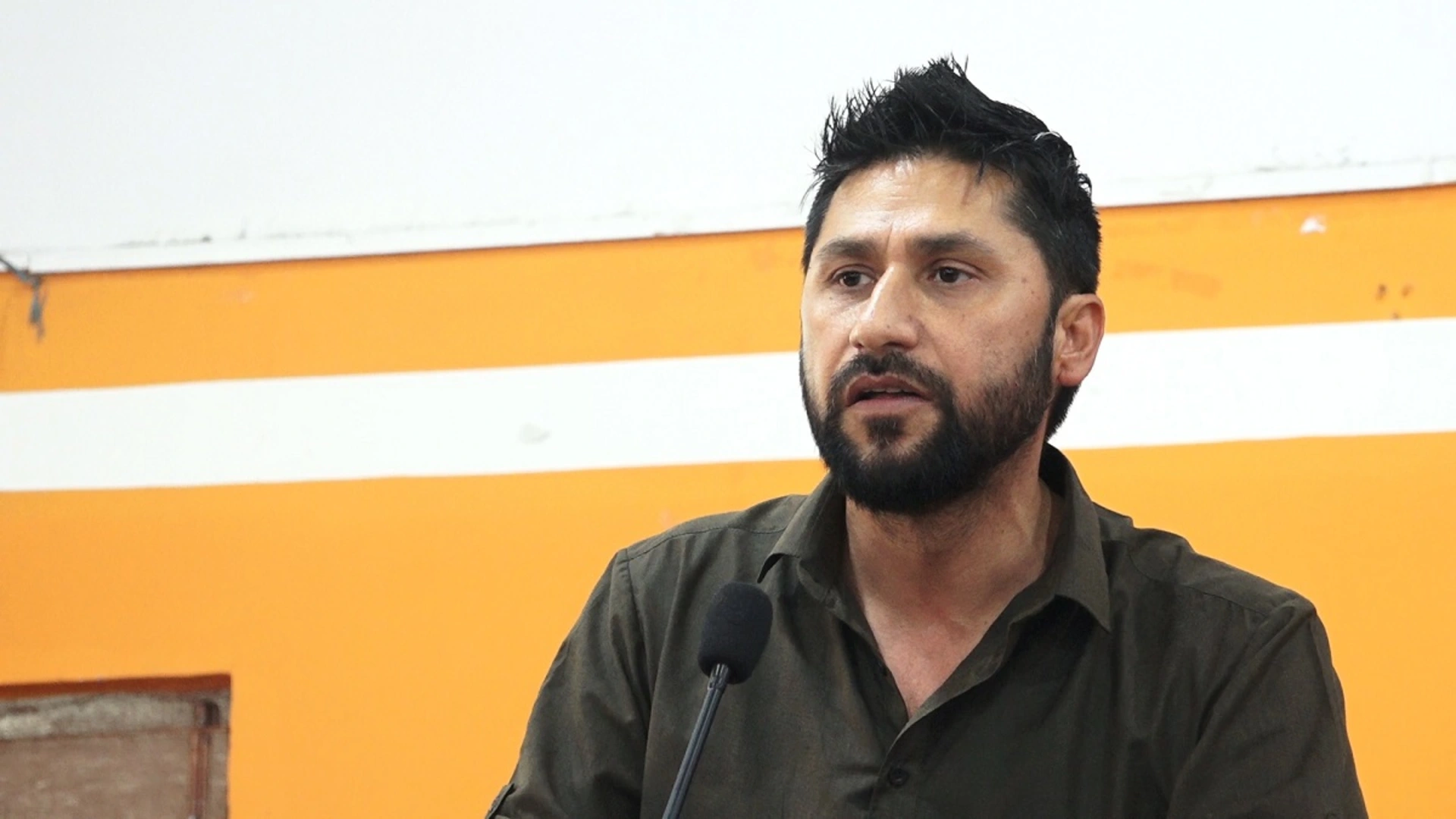I have fond memories of Jhumroo from childhood. Jhumroo was a camel I grew up watching and playing with till he was four years old. Though too big for a child, he was my playmate with whom I indulged in riding, playing and even fighting.
My next camel ride was after many years, on Rajasthani Diwas a few years ago. I rode the champion camel pair, Dhola-Maru, named after the Rajasthani folk tale, a Romeo and Juliet-like love story about the Narwar prince Dhola and the Poogal princess Maru, who escaped with their lives on a mystical flying camel.
I remember, when this pair was being brought down from a truck near South City in Kolkata, people were awestruck by the sight of the large four-legged humped creatures on city roads. The police had to be called in to manage the crowds.
At that time, I had thrown a desert-themed house party, and camel rides turned out to be a hot favourite with the guests. I am very upset to know from reliable sources and media reports that the camel population in India is declining at a worrying rate. According to available data, there were about 6 lakh camels till a few years ago, which has come down to around 2.5 lakh today. Most of these are in Rajasthan. At this rate, they would, in five years’ time, become an endangered species in our country, mostly in zoos and owned by the rich.
This is a scary situation. A sort of silent holocaust of camels is on at the moment. Where have all our camels gone?
The camel is a unique animal that can survive in very high temperatures and the most inhospitable climates, and has a very low maintenance cost. In many remote, inhospitable, sandy terrains, it is still the most reliable means of transport and lives up to its name of being the “ship of the desert”. There are villages where the Indian Postal Services use camels to deliver letters. Camels are also used for transporting food and have even been known to carry ballot boxes during elections.
Years ago, someone presented me with a painting on camel skin. Camel bone is also used for making various kinds of so-called handicrafts items. There have been instances of people passing off camel bone products as ivory. I am told that the Rajasthan Assembly had some rules regarding the killing of camels, but I wonder if they are being followed. Else, how do you explain the alarming decline in the camel population? Are we waiting for the camel population to come down on par with tigers before we begin to think of banning camel skin and bone products? Why don’t we wake up now to save the pride of the desert?
With petrol and diesel prices moving up, there have been reports of a large number of people in the desert going back to buying camels for the purpose of transportation. This resurgence in the use of camels as beasts of burden might at least contribute to bolstering their numbers. However, much more is needed. The International Union for Conservation of Nature (IUCN), one of the largest and oldest global environmental organisations, has put camels on its Red List of threatened species. When will India take notice of these facts?
The plight of camels is a stark reminder of the broader crisis facing our wildlife. Just as the desert’s ships are vanishing, the majestic tigers of our forests are always under threat. Both scenarios reflect a disturbing trend of human greed and negligence that threatens to erase our natural heritage.
A while ago, I came across a small piece of news on how one of the largest and strongest networks of poachers in the country was busted, with the arrest of 65-year-old Surajpal, also known as Chacha, who, along with his nephew Sarju, is said to have killed 300 tigers in the past 30 years and smuggled bones and skulls to international markets, especially China, running into crores of rupees. For both our tigers and earnest conservation efforts across government bodies and civil society, however, it was an incalculable loss.
The report, which read like a horror story, said that 18 kilos of tiger bones, nails and skulls were found with Surajpal, who ran his operation out of Delhi. Besides these, Rs 50 lakh cash was also recovered from his house. The CBI and Wildlife Crime Control Bureau were in hot pursuit of Chacha since 2005, when they came to know about his activities with the arrest of notorious poacher Sansar Chand, who is said to have traded in animal parts by killing over 250 tigers, 2,000 leopards, 5,000 otters, 20,000 wild cats, 20,000 foxes and so on, according to reports. This is nothing short of wildlife genocide.
I was aghast to read that Surajpal had earlier worked with the infamous poacher, Sansar Chand Gujjar, and had earned for himself a dubious reputation of being the best supplier of tiger skins and bones. The modus operandi of Surajpal was simple but deadly. The tigers were poisoned but attempts were made to make the deaths appear natural.
To me, people like Surajpal and Sansar Chand should be tried for their crimes and meted out the harshest punishment under the law. The legacy of the likes of Veerappan continues in this country, even in our wildlife sanctuaries like Jim Corbett National Park, Rajaji National Park and Melghat Tiger Reserve in Maharashtra. Surajpal had set up a network of poachers, smugglers and poaching tribes across India. But for people like him and a few others, the population of Indian tigers today could have been far higher than it is now.
At the launch of my book The Safari: A Diary on Ranthambore some years ago, I was in conversation with two of India’s leading wildlife conservationists, Belinda Wright and Nitin Desai. Nitin shared with the audience some of the counter-poaching strategies adopted by his organisation and others, which included working closely with villagers and local residents to inform them about the poaching networks such as the ones used by Surajpal, and incentivising them to work for the precious animal population and not against them.
I now can appreciate the efficacy of such moves. There is a hue and cry over “human rights” violations across the world on so many issues. It is high time we treated “animal rights” on par with human rights under the purview of law. For the sake of both our tigers and camels, and all the other precious natural heritage that will be otherwise lost.







